-
Posts
1,065 -
Joined
-
Last visited
-
Days Won
1
Content Type
Profiles
Forums
Blogs
Gallery
Events
Store
Posts posted by Graham Stewart
-
-
Looks rather young, but CSM / CQMS at that time?
Ah a common error. The ranks you mention are ranks which weren't designated until the beginning of the Great War prior to that the rank wherebye three chevrons with a large crown above worn on Service Dress of any pattern was that of Colour Sergeant. No badge of rank was adopted for wear on SD which reflected that as worn with full dress as seen in your photo showing Colour Sgt Surtees showing the crossed union flags.
There were eight "Colours" per battalion on an eight company basis and when the new ranks of CSM and CQMS for the new four company organisation were introduced it would appear that the four senior 'Colours' became Company Sgt Majors and the junior 'Colours' became CQMS.
On top of which the rank of 'Sergeant Major'(rank badge being a very large crown) was abolished and he became the 'Regimental Sergeant Major'(new badge Royal Arms)
0 -
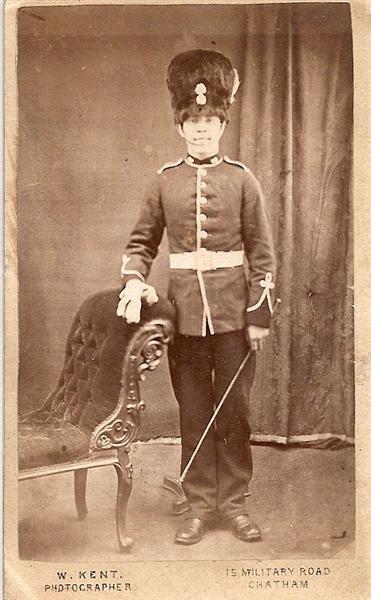
Taken by W. Kent this CDV shows a Northumberland Fusilier of the 2nd Battalion who were stationed in Chatham c.1878. The pattern of tunic worn is the 1871 pattern and was the pattern worn prior to the introduction of the 1881 pattern with 'jampot' cuff.
0 -
For some reason my write up never attached itself to the last post so here it is;-
Now a nice mystery SD jacket. Obviously he's NF, but the SD jacket is a bit of a mystery as it's not a 1902 pattern or any of the patterns introduced thereafter. This appears to be a foreign service pattern and probably worn during the Boer War itself or even before. Whats interesting here are the rank badges, which aren't what you'd expect on SD. They're the gold and coloured thread rank badges normally found on full-dress. So what rank is he? 100 points for the correct answer.
0 -
-

With the introduction of the new SD, new shoulder titles were adopted, but these were white worsted cotton on a red background and worn with a battalion numeral.
0 -

Nice photo of young members of the 4th Bn, N.F. wearing the new khaki S.D. with the detachable shoulder strap brought into wear from 1902. Young man on right seems to be wearing the 'undress' scarlet jacket as again there's no sign of piping on the shoulder strap which would indicate full dress. Note also the 'jampot' cuff. The 4th Bn was eventually disbanded 1906.
0 -
introduced 1881 - started to phase them out c.1902. For non-Royal regiments they were always white, but when coloured facings were reintroduced 'jampot' cuffs became coloured but seemingly for a short time only. Very little information is forthcoming regards full dress and undress thereafter, but at least two other patterns were adopted by regulars, the final one being the 1913 pattern.
In 1902 undress was abolished in favour of khaki SD.
0 -

Latest edition to the collection. Northumberland Fusiliers St.Georges Day c.1900/01. This could actually be either the new 3rd or 4th regular battalion, but what is interesting is the uniform. It's the 7 button undress Home Service pattern frock jacket and what is unusual is that apart from the piping down the front of the jacket no other piping is worn. The shoulder straps are plain scarlet with the title "bomb/NF" woven in white worsted. The collar and cuffs are in 'gosling green' facing colours, although at least one individual still has the more common white collar and cuffs. What makes these jackets rarer is the fact that they're 'jampot' cuffs, which were later replaced with a pointed cuff.
0 -
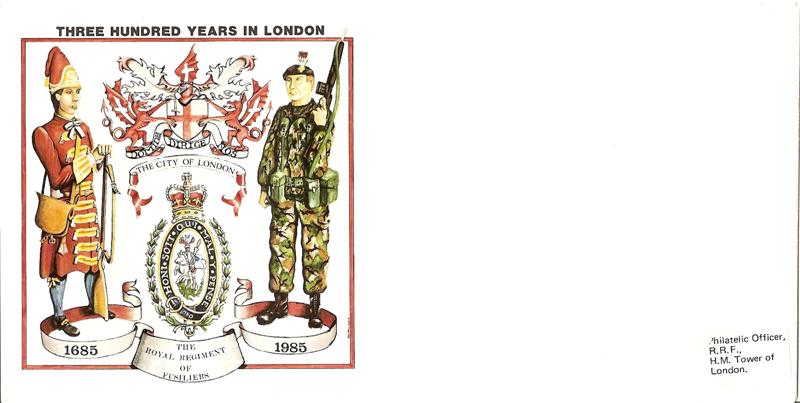
Latest addition to my RRF collection a 1985 RRF cover celebrating their 300 year connection with the Tower of London.
0 -
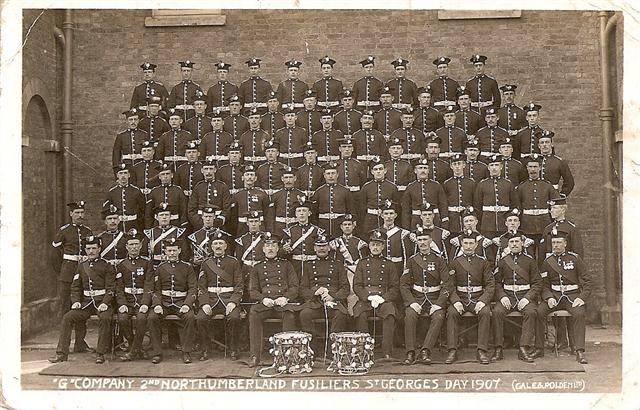
However there was a small addition in that the company's were now lettered and here we have 'G' Company, 2nd Bn, N.F.
0 -
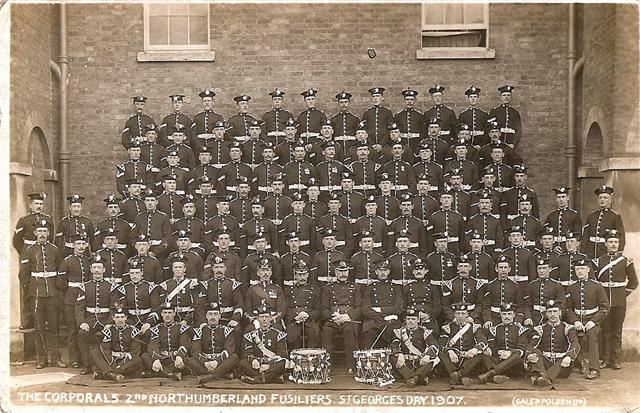
The tradition continued into 1907 and here we have the Cpl's again.
0 -
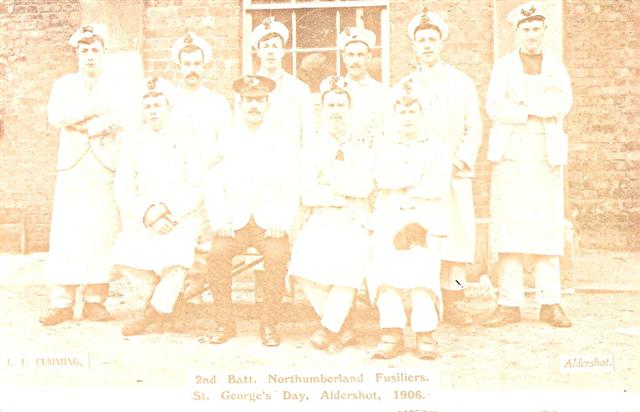
Even the cooks got a look-in. Seriously would you want to "cross" these lads and complain about the grub?
0 -
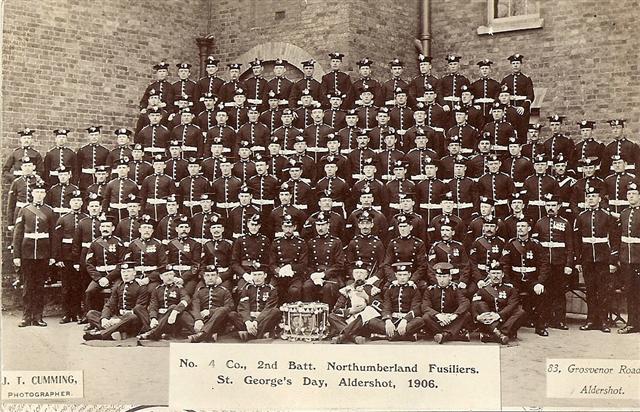
In 1906 company indicators were re-introduced to the photo's of the 2nd Bn, N.F.
0 -
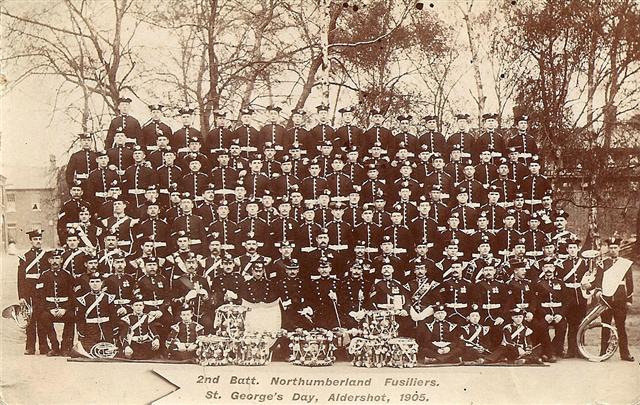
Another unknown company 1905.
0 -
-
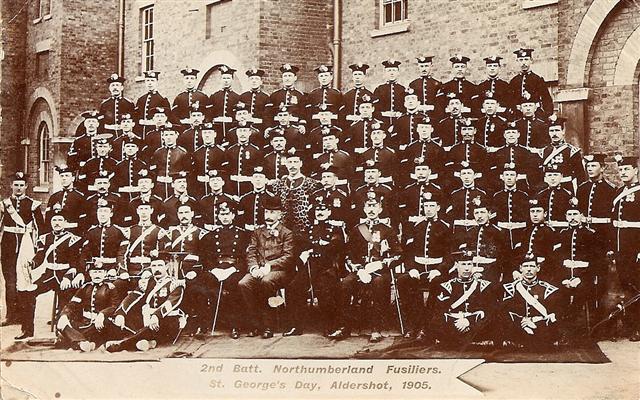
In 1905 no company indicators were put on the photo's.
0 -

No.1 Company, 2nd Bn,N.F.
0 -
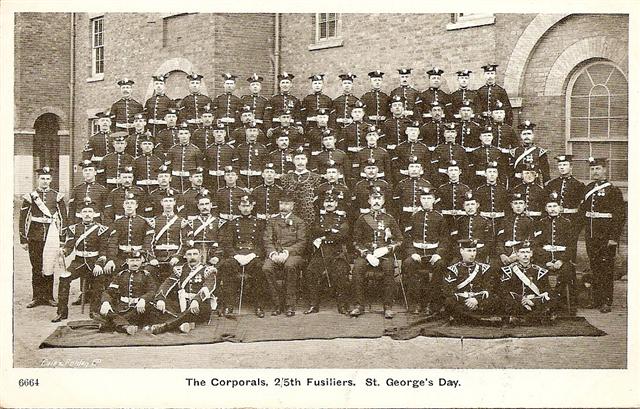
From the same series of photos depicted by Leigh & Coldstream, some more of the 2nd Battalion, N.F. which became an annual event over the coming years.
0 -

During the South African the NF were one of a handful of regiments allowed to recruit additional regular battalions in 1900 and here we have a photo of members of the 4th Battalion taken March 1904 for the regimental journal.
0 -
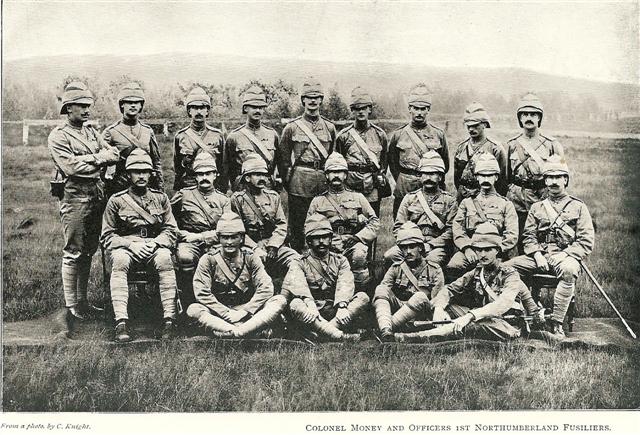
Th officers of the 1st Bn who would lead them in South Africa. Centre seated is Lt-Col C.G.C. Money and left of him the 2i/c Major the Hon. C. Lambton, while seated to the extreme left is the Adj Capt & Brevet Major G.L.S. Ray.
0 -
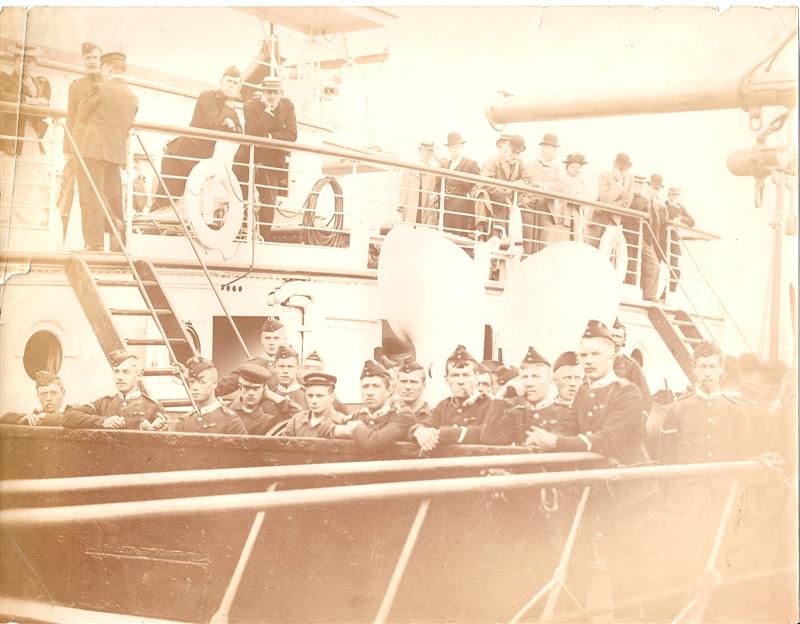
Rare photo of the Northumberlands possibly taken originally for an illustrated magazine. On the reverse is pencilled in "Departure of the 1st Northumberland Fusiliers for the Cape", which would make it 16th September 1899 and aboard the Union Liner Gaul.
0 -

Caton Woodvilles lovely "Northumberland Fusiliers". It's a study of a Territorial Bn on parade and is supposed to be the 4th Bn,NF which would date it between 1910-14 as they were still clothed in Rifle Grey until adopting scarlet. Depicted in the background is Alnwick Tower.
0 -
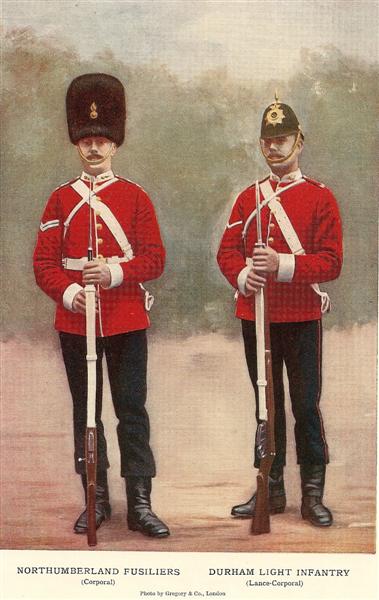
Nice 1890's coloured print of a Cpl Northumberland Fusiliers and L/Cpl Durham Light Infantry. One wonders if they were staged for all such regiments as something is missing from the NF Cpl's furcap.
0 -
Certainly looks more Colonial than British, plus the strap is numbered and looks like '22'. or '23'. Canadian Militia units I believe were numbered, so it may pay to check out their ORBAT for the turn of the last century.
0




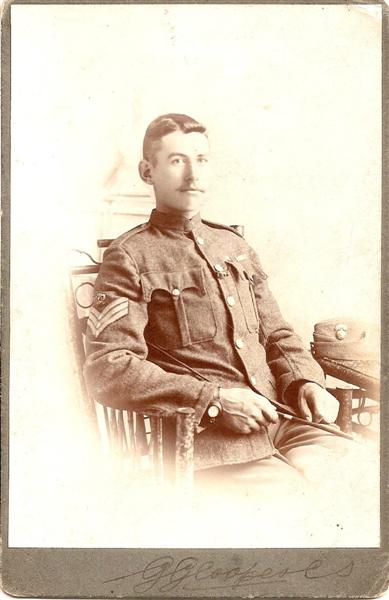
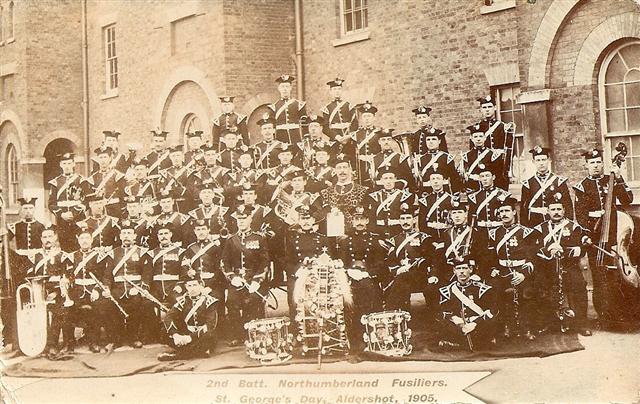
The Royal Northumberland Fusiliers - (***MODERATORS' CHOICE)
in Great Britain: Militaria: Badges, Uniforms & Equipment
Posted
Know exactly how you feel as it became a bone of contention on another forum I'm a member of. We did eventually discover that the rank of 'CSM' was to be found amongst Mounted Infantry units, who operated on a four company basis and we wondered if this was the model on which the four company reorganisation looked to. The same order also revealed that men promoted to CSM while serving with the MI had to revert to their old rank on returning to their old battalion.